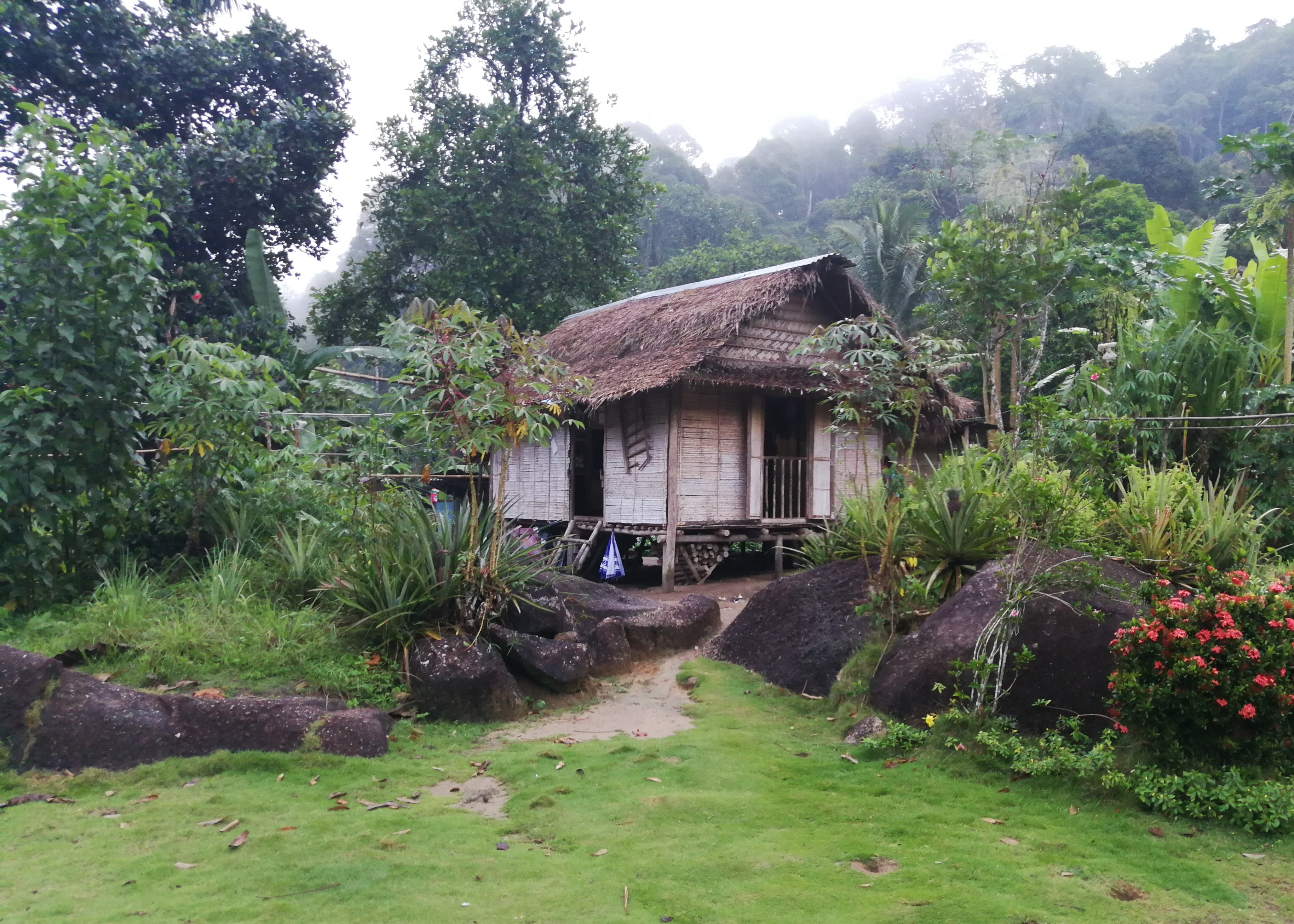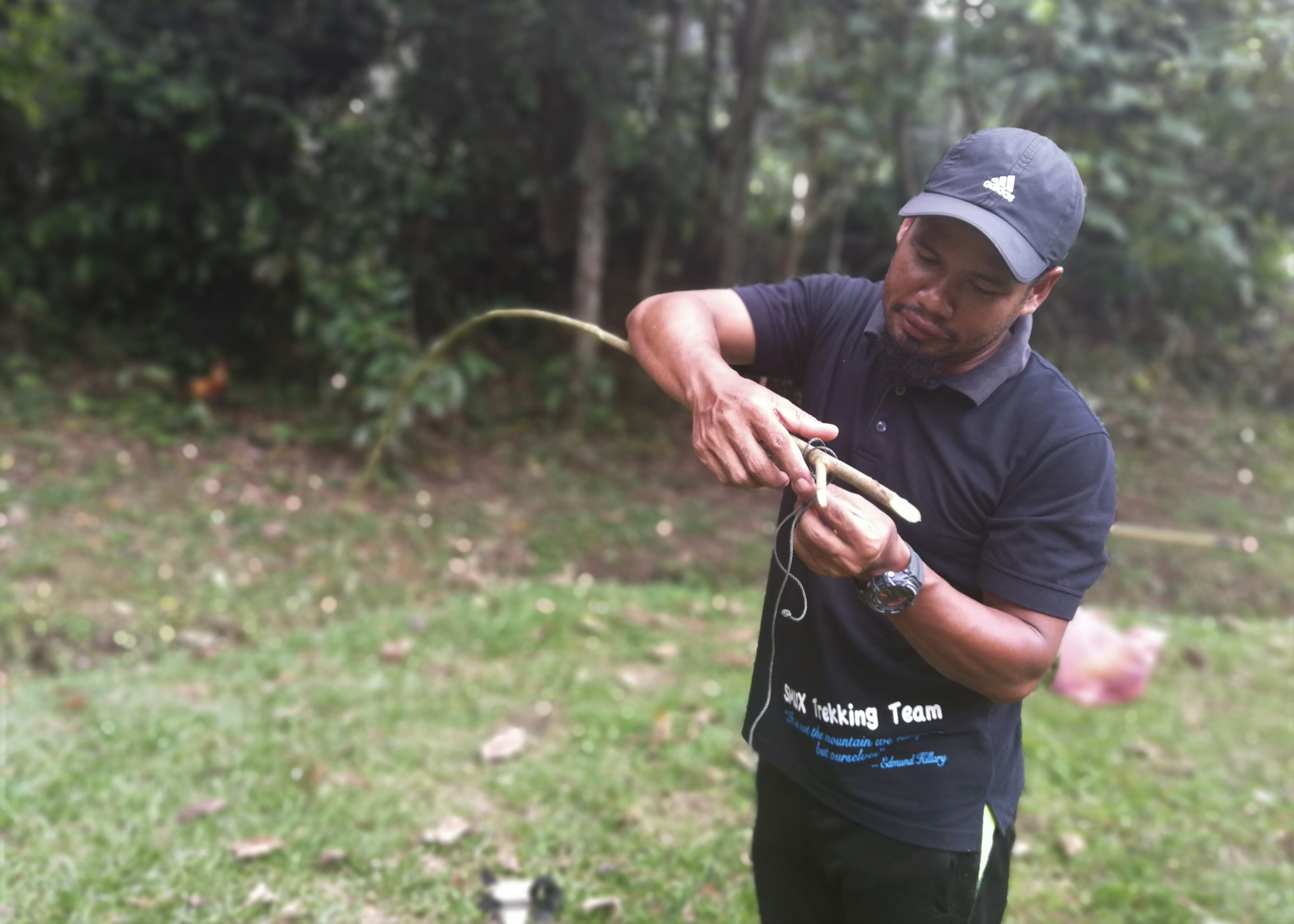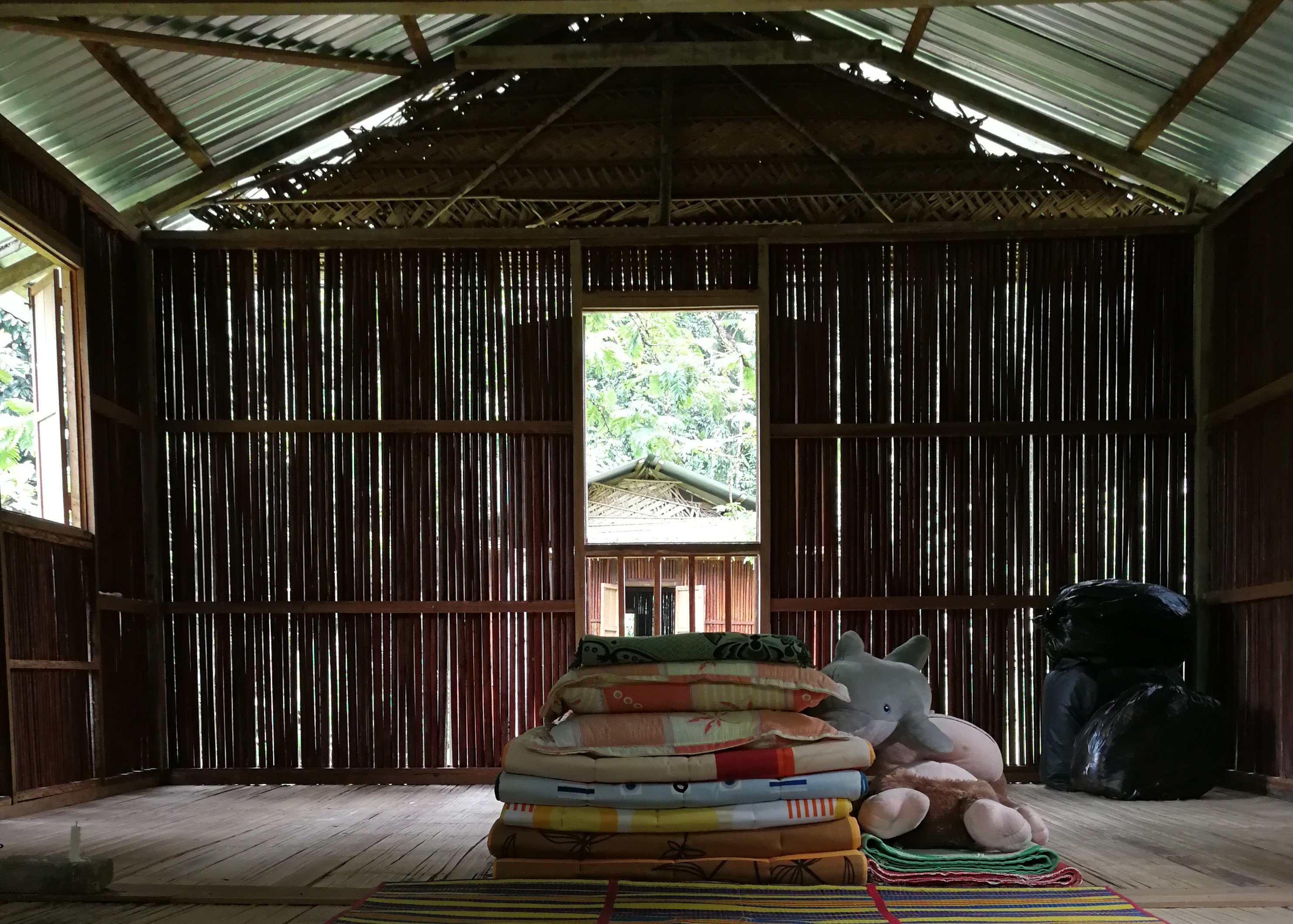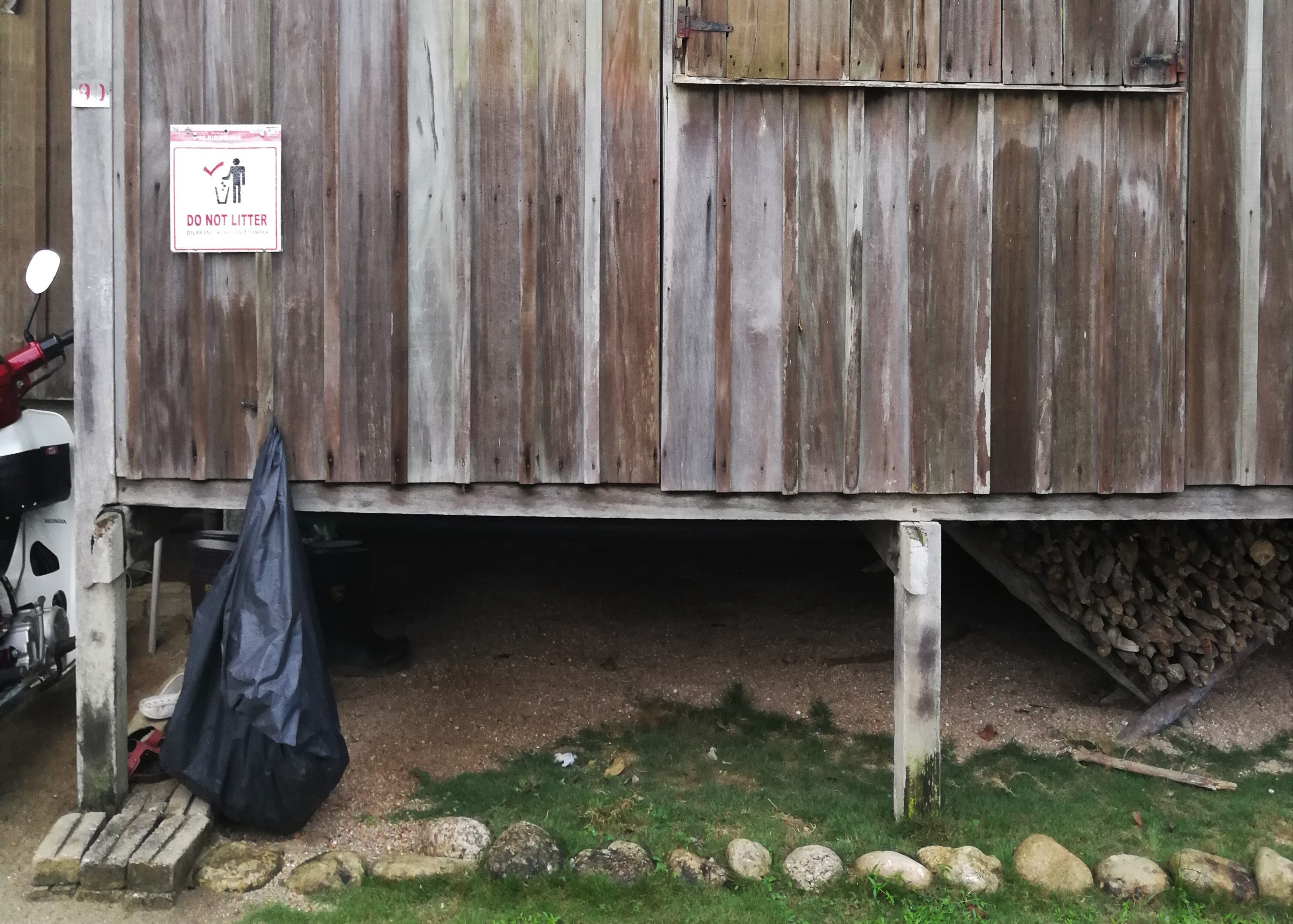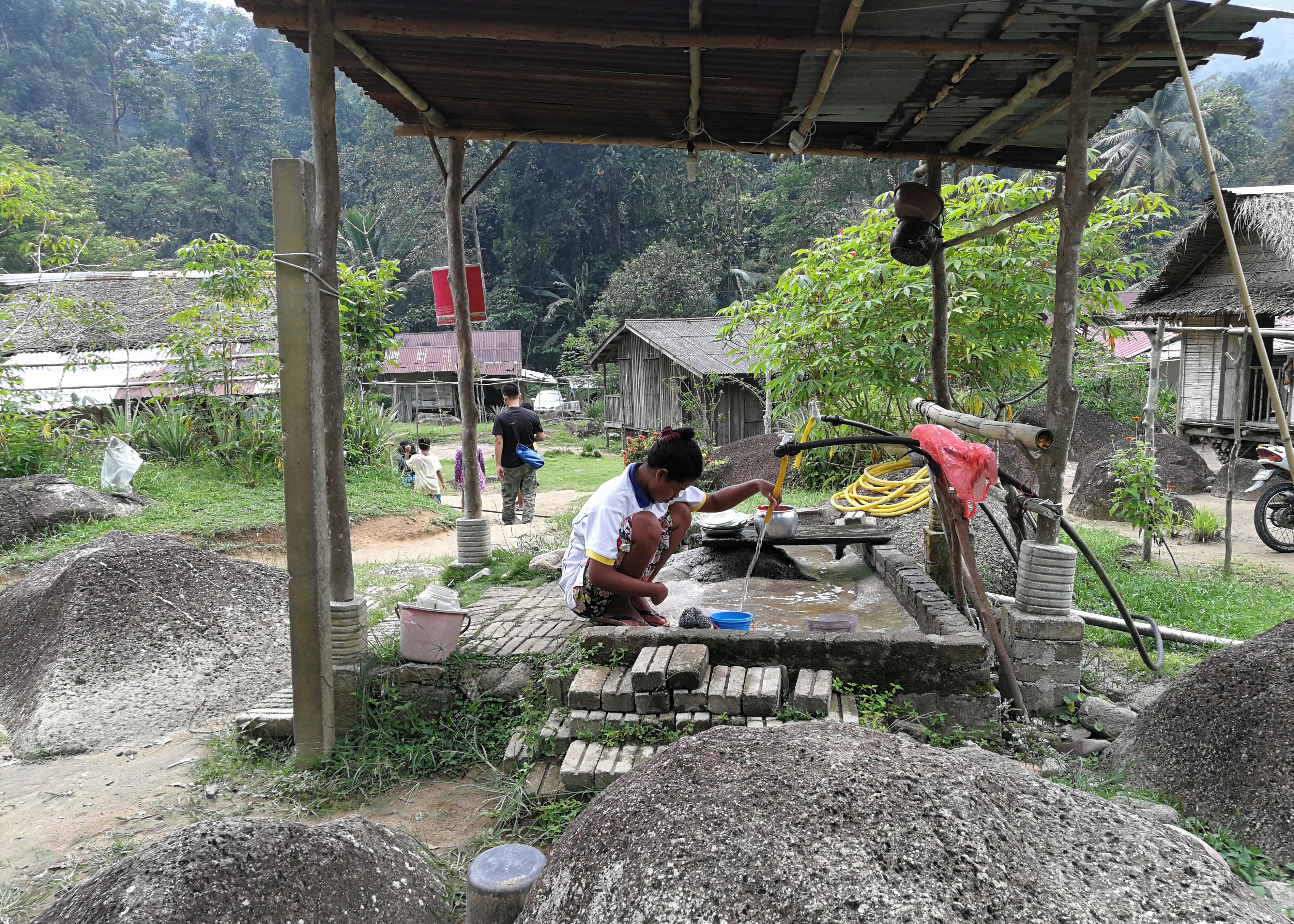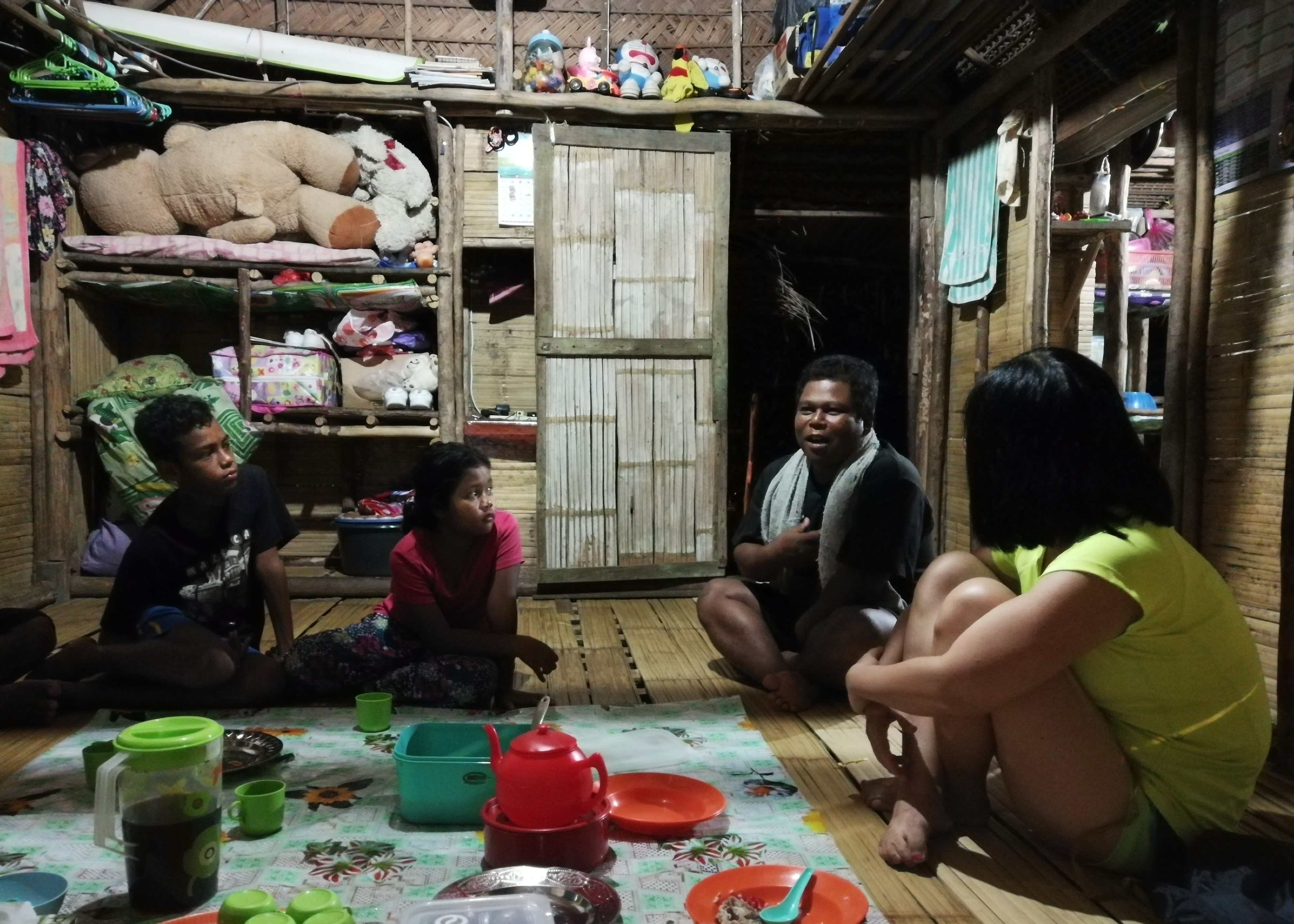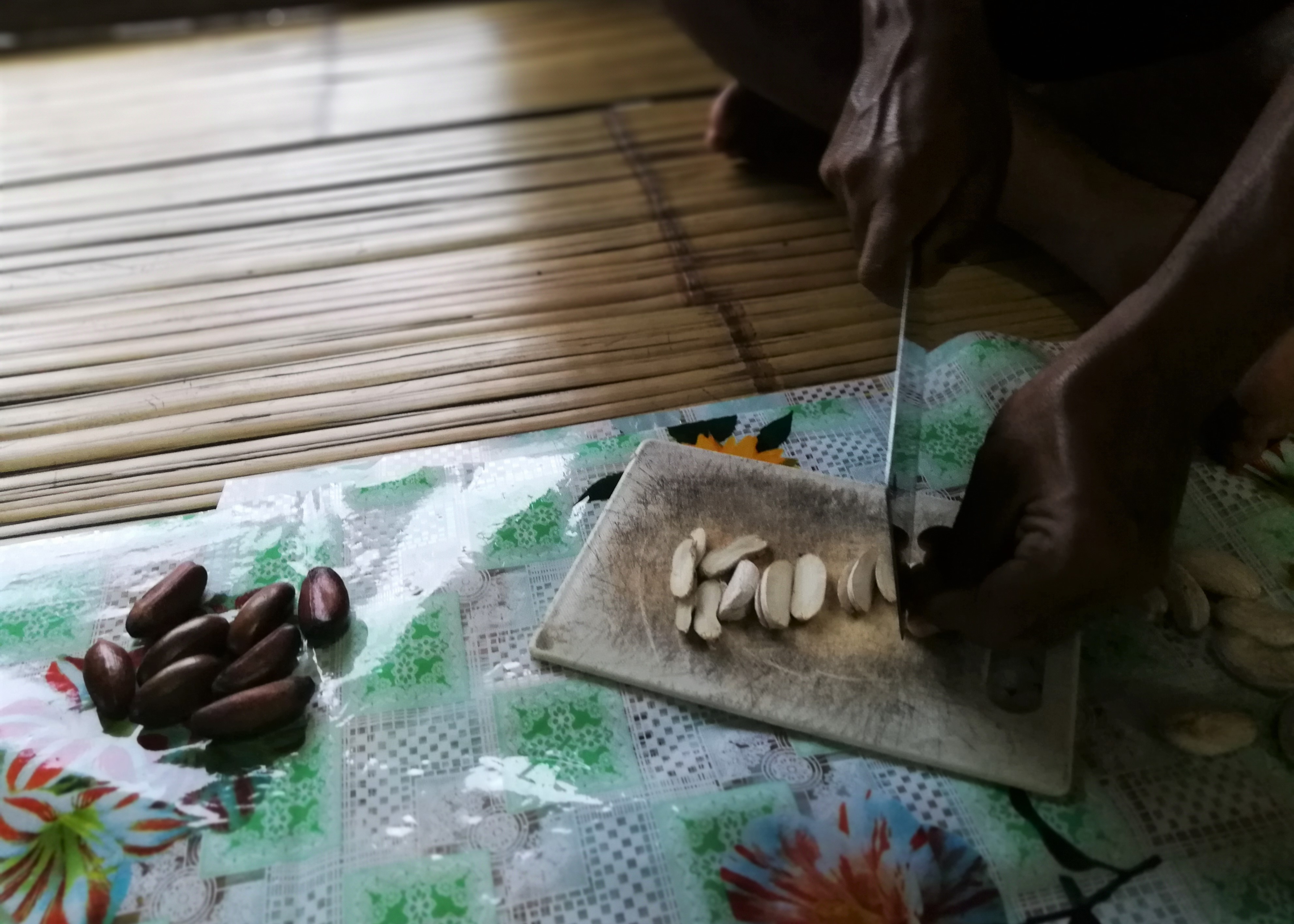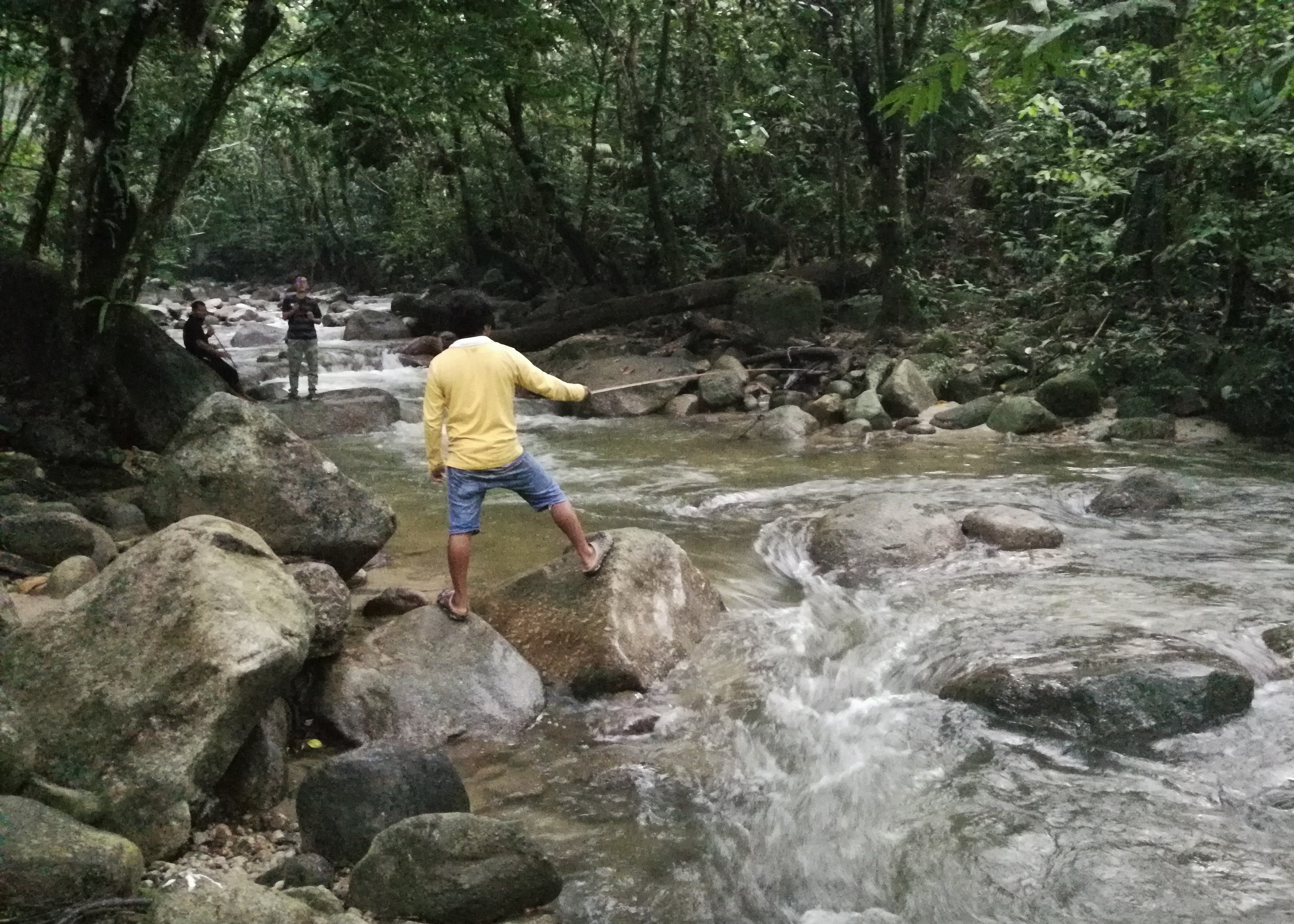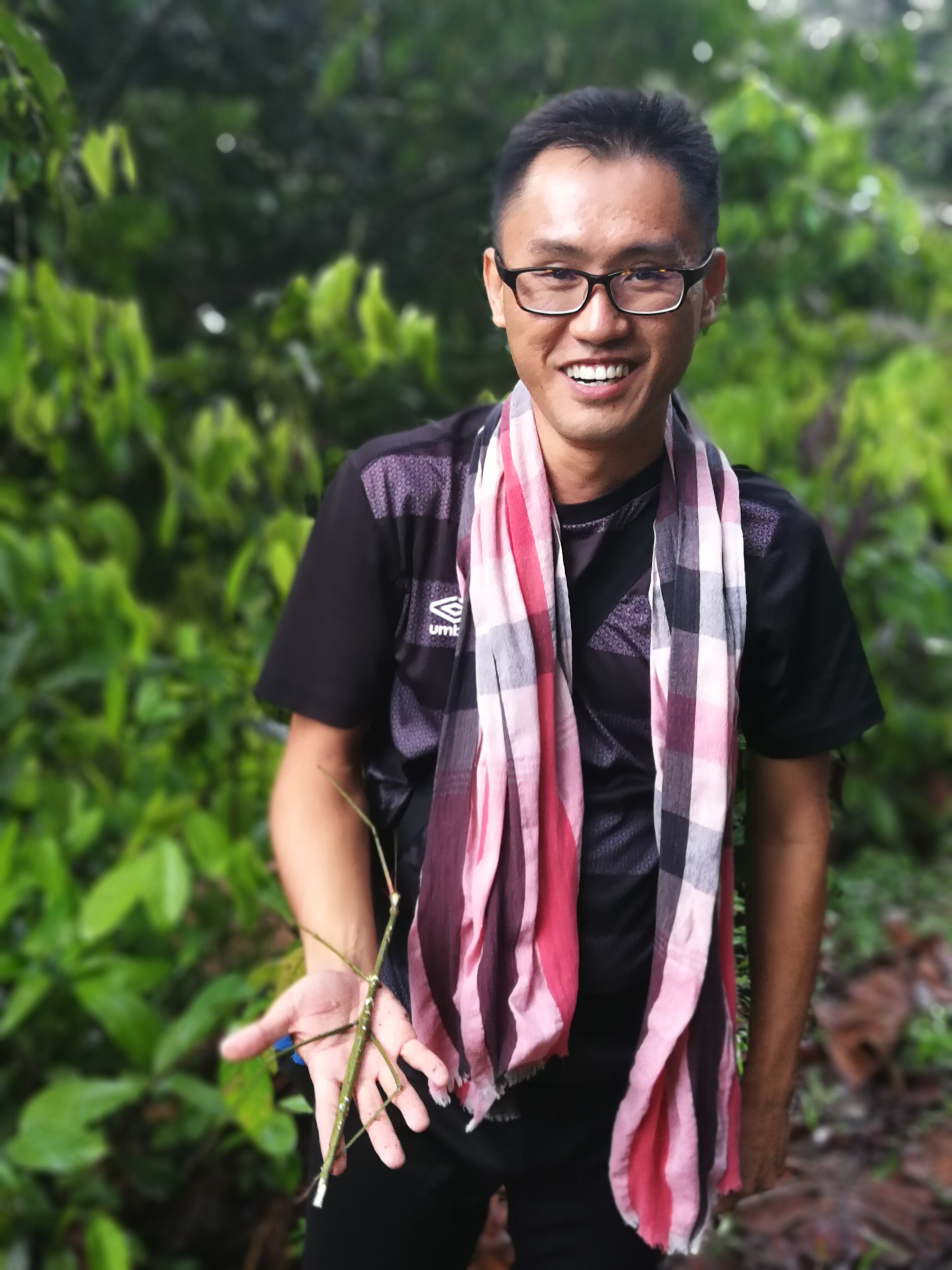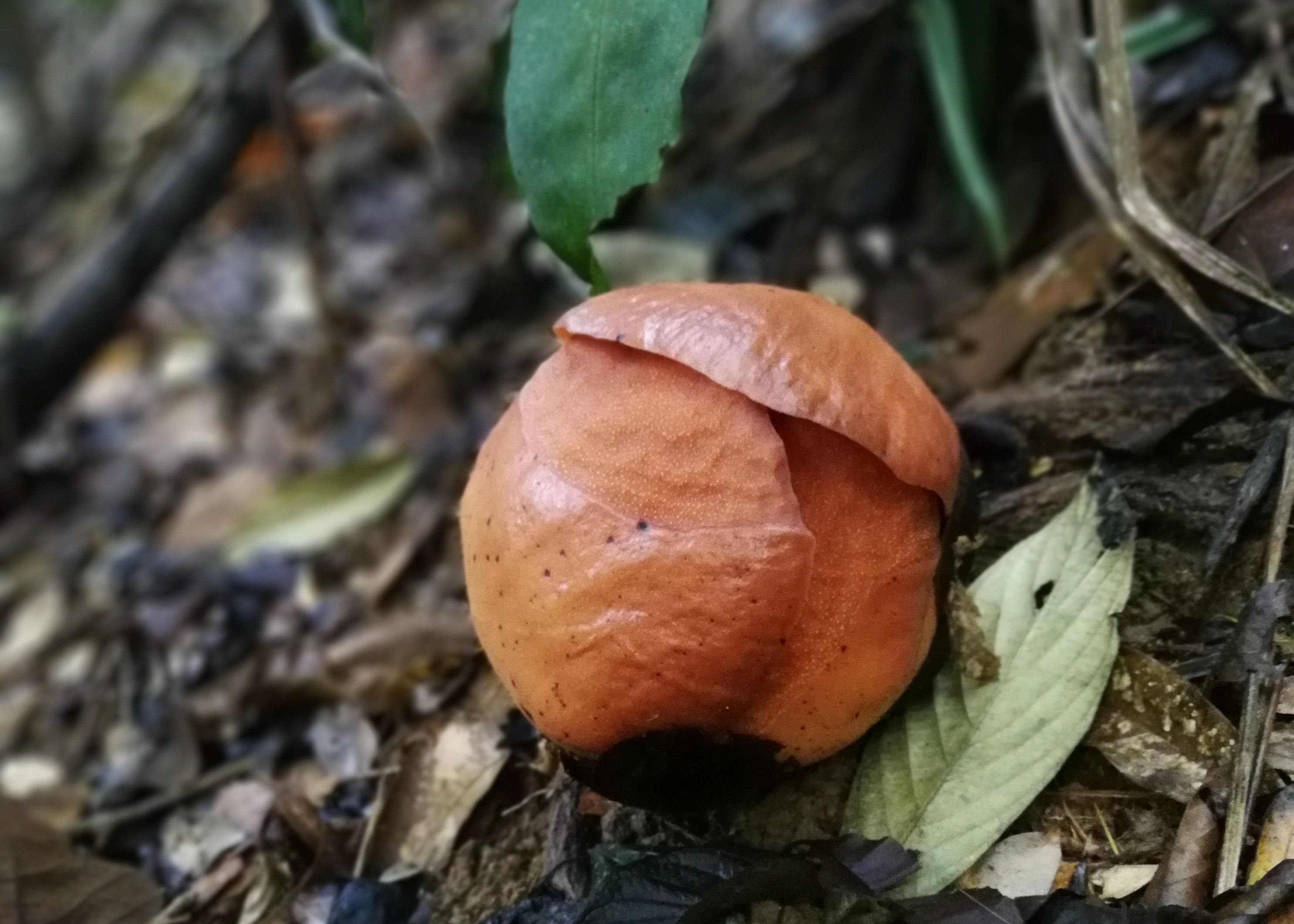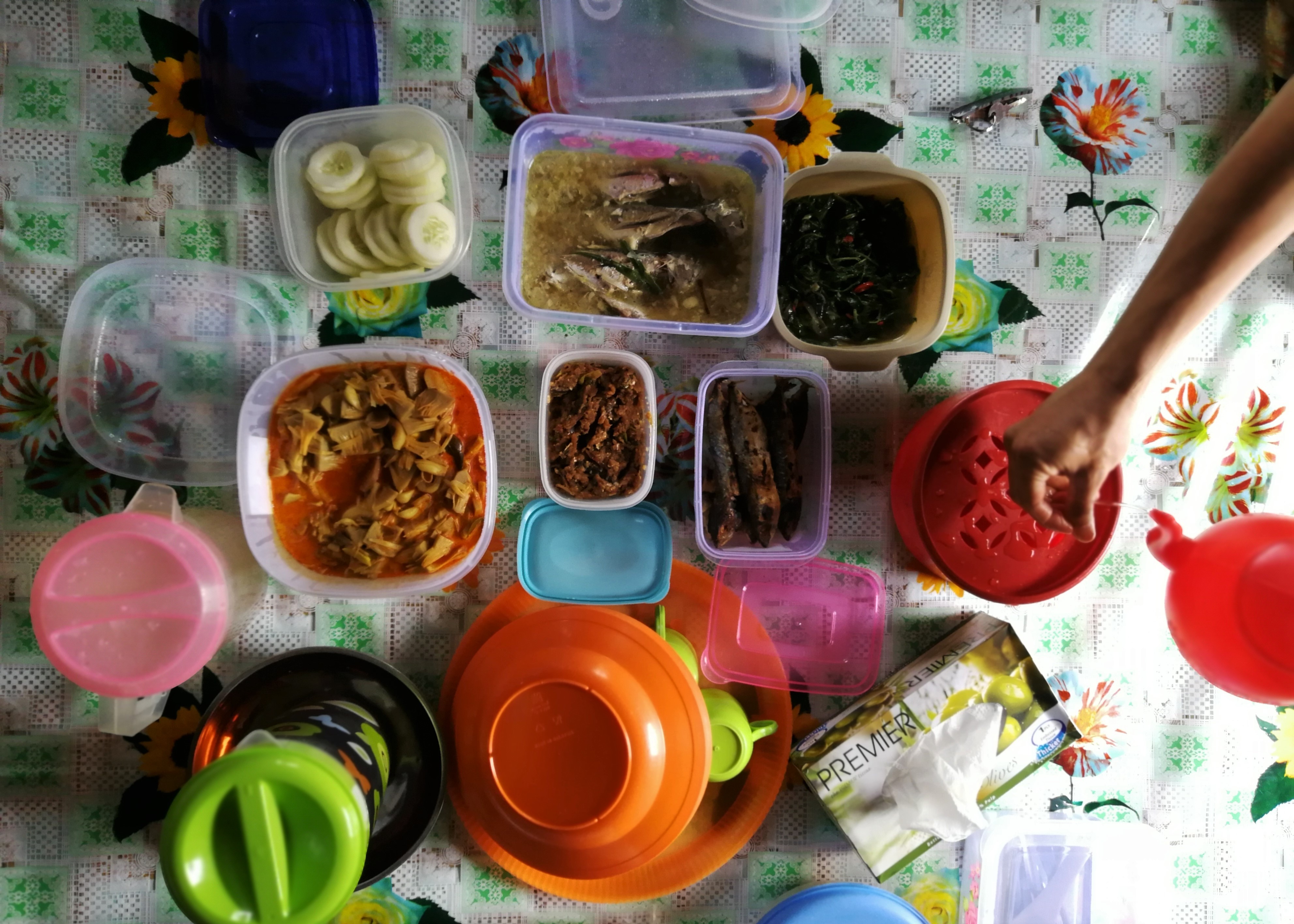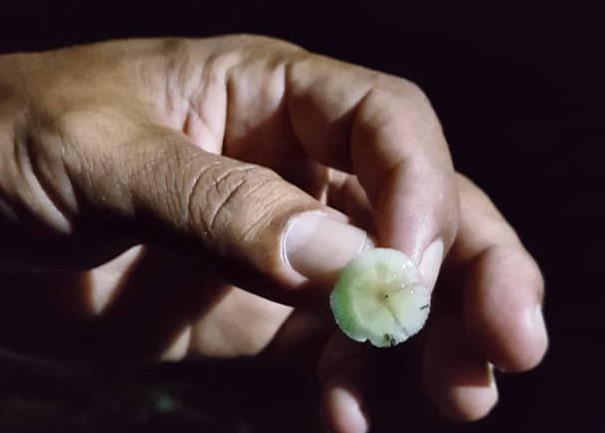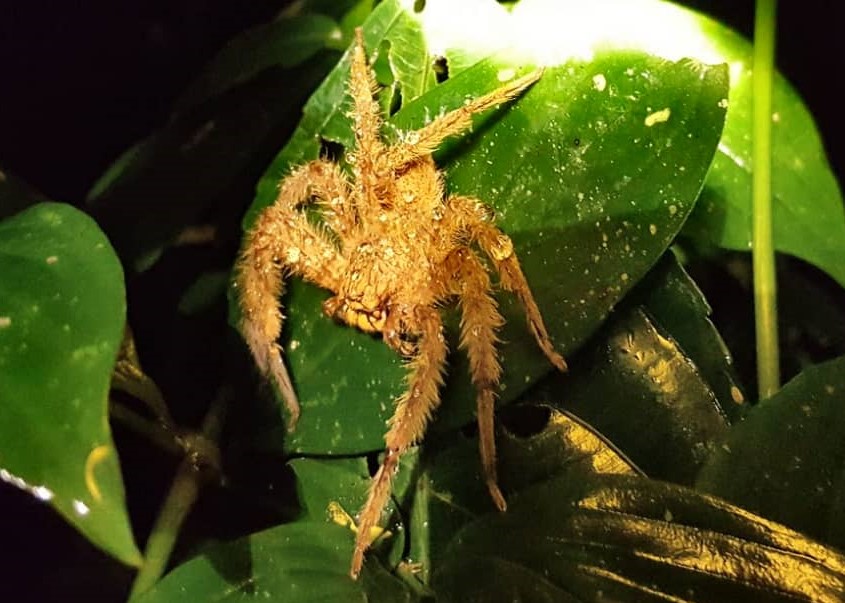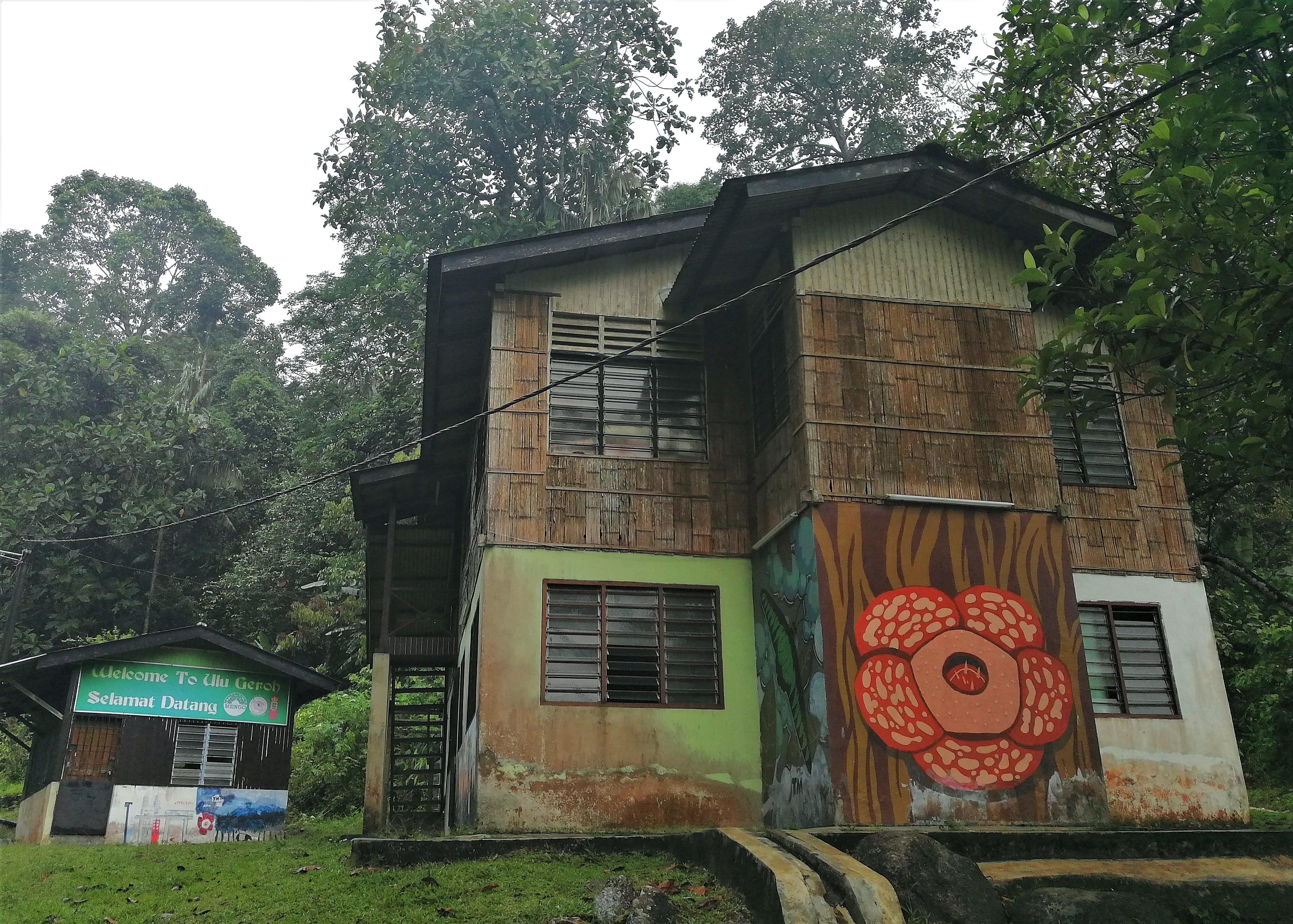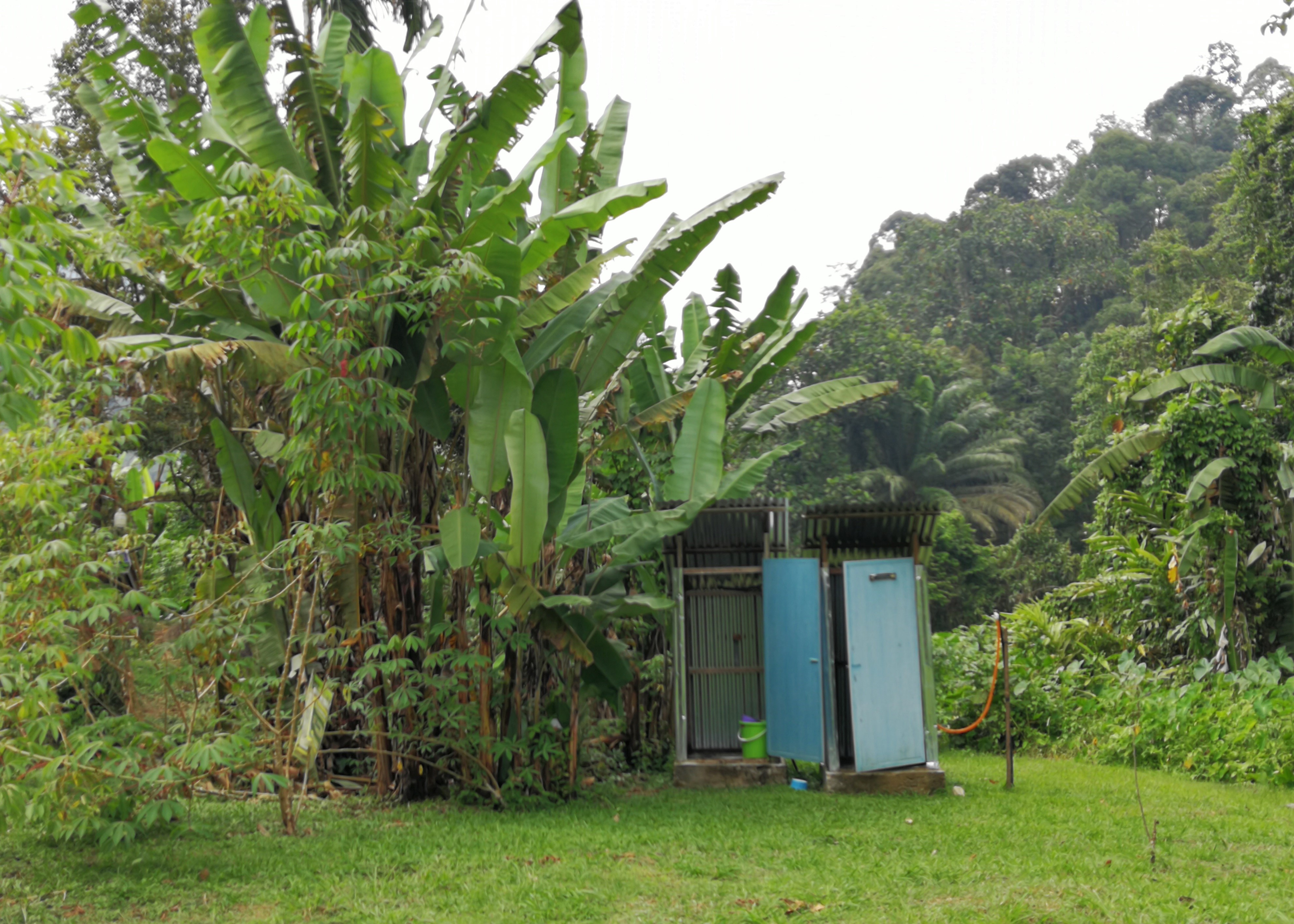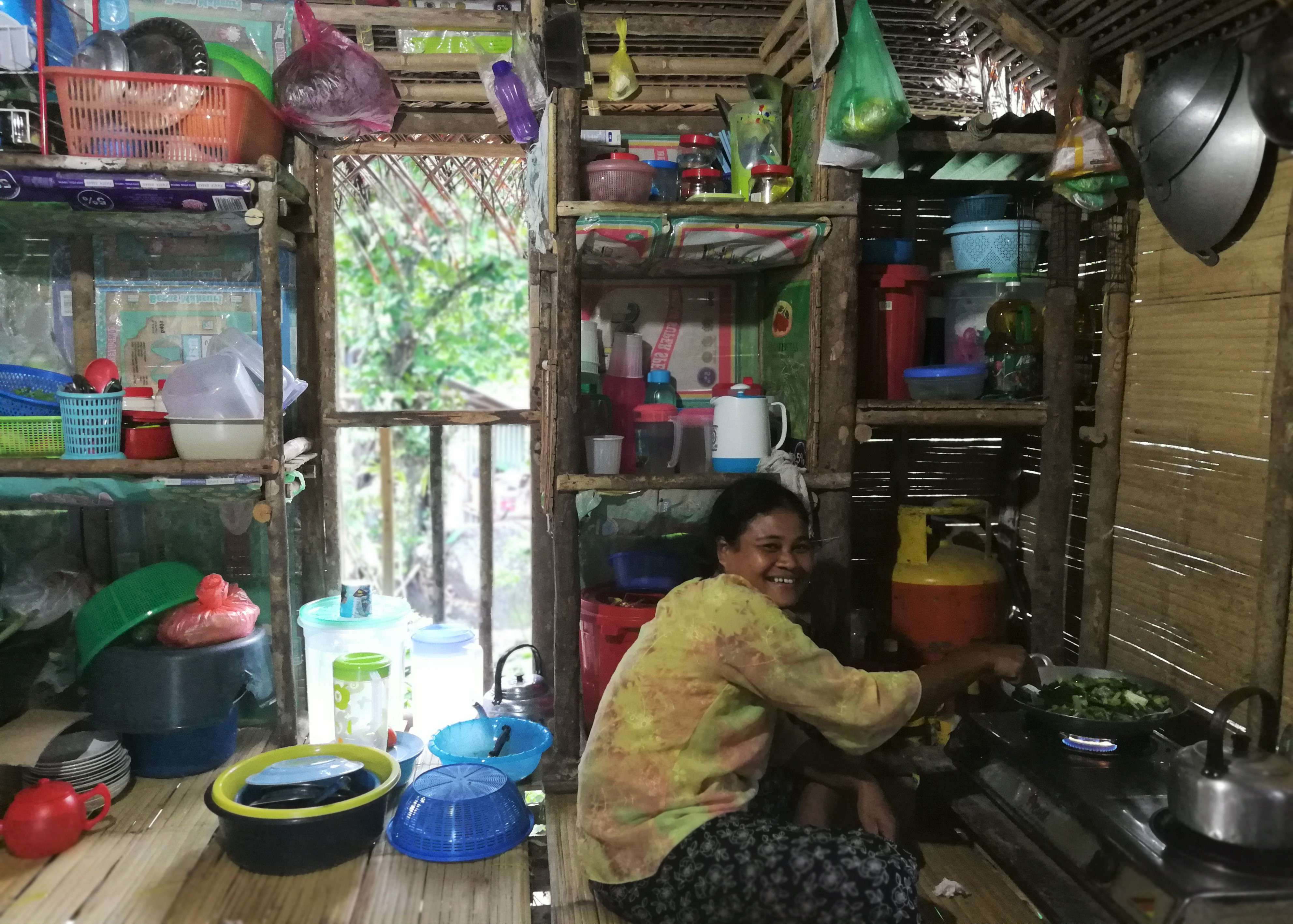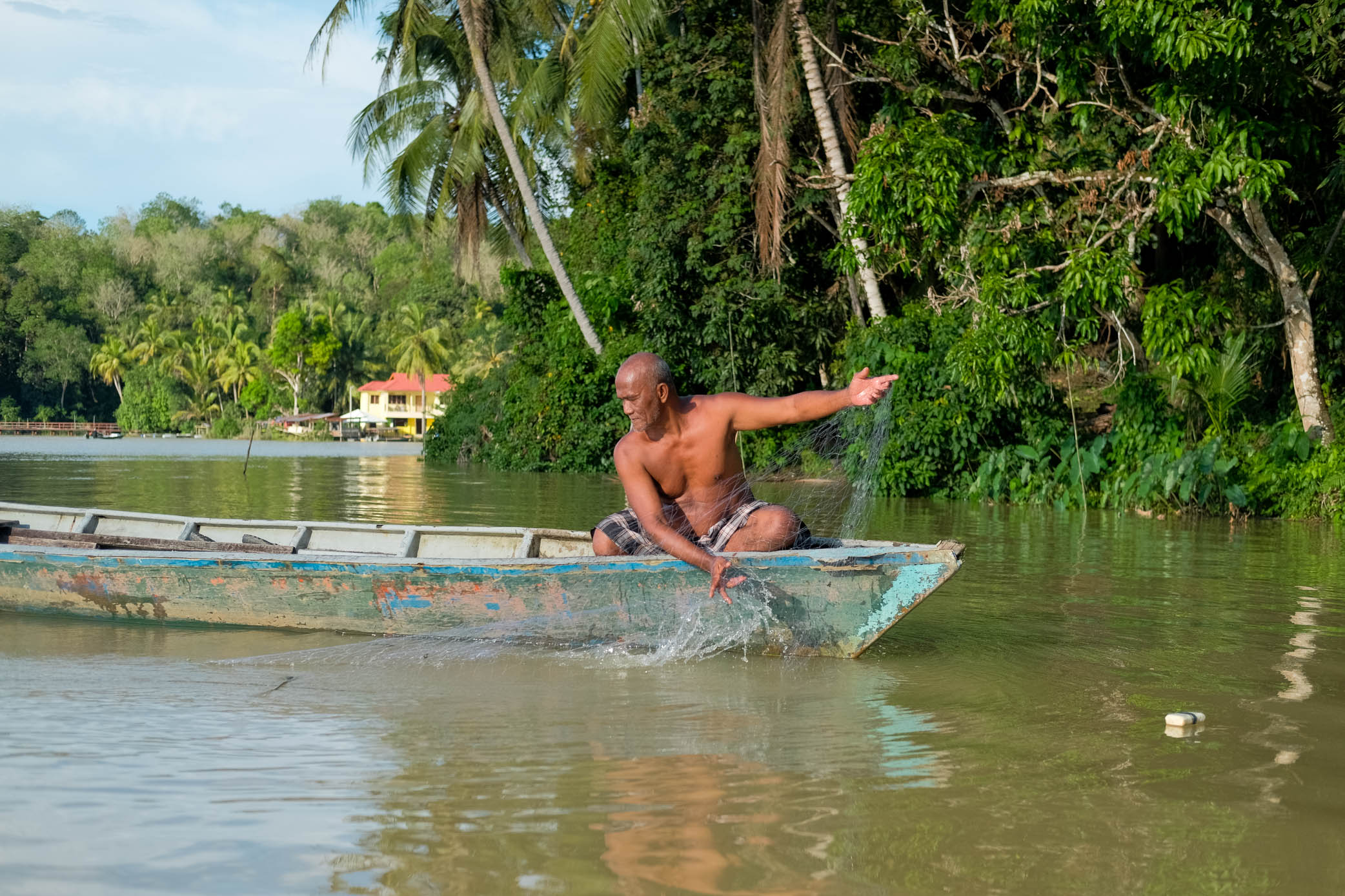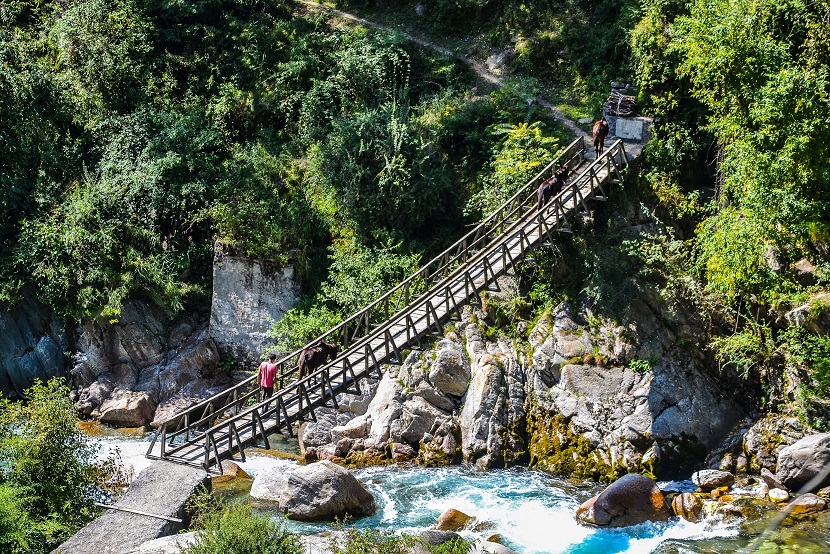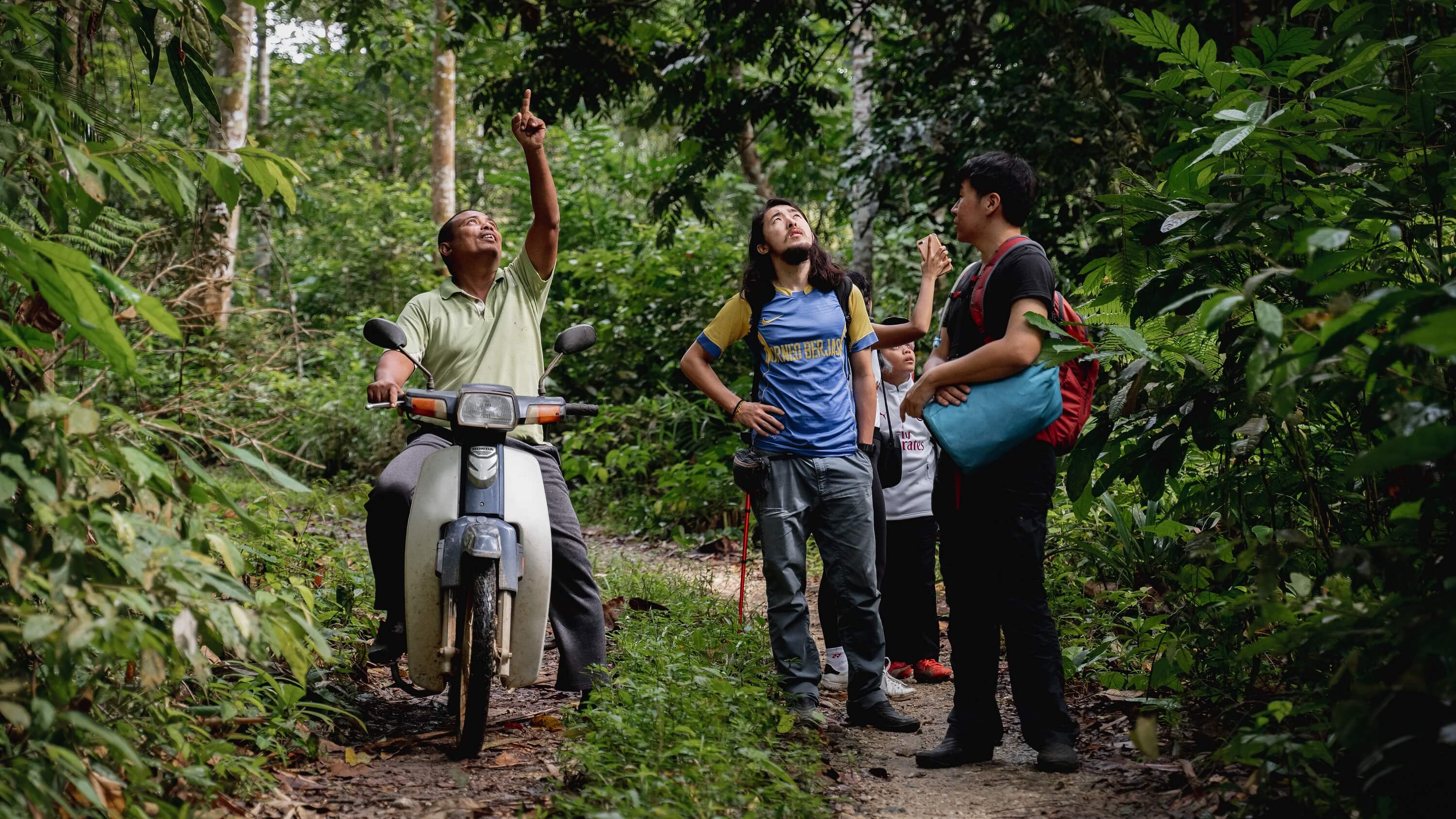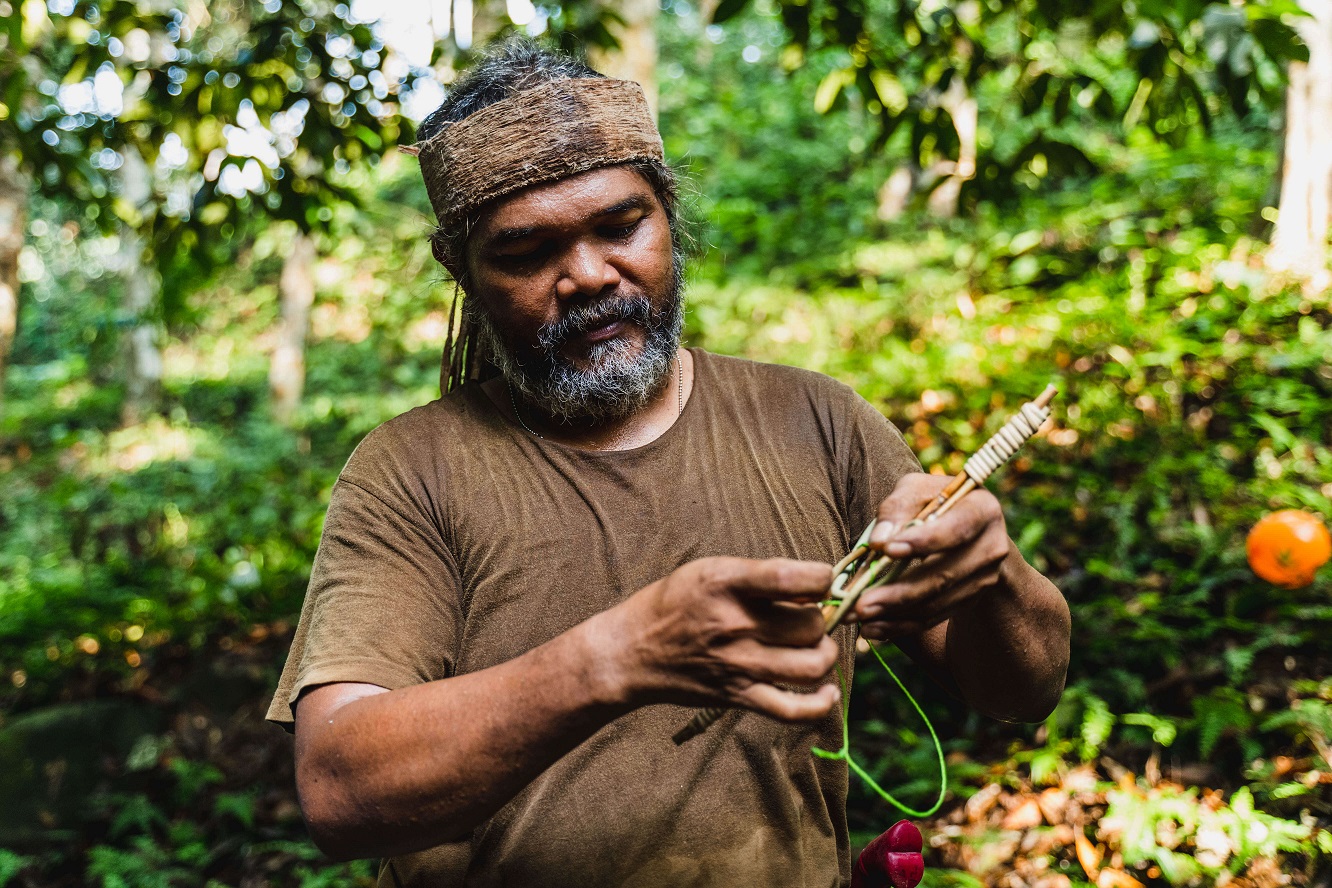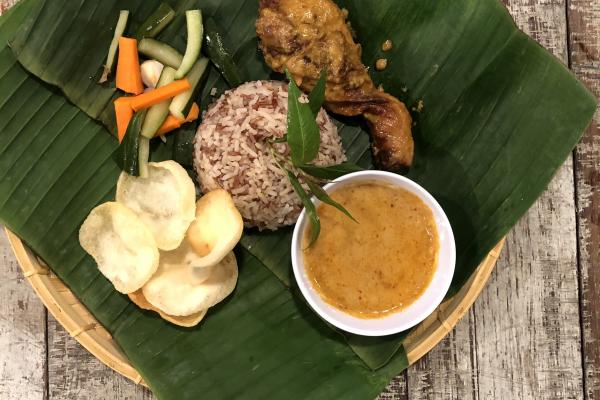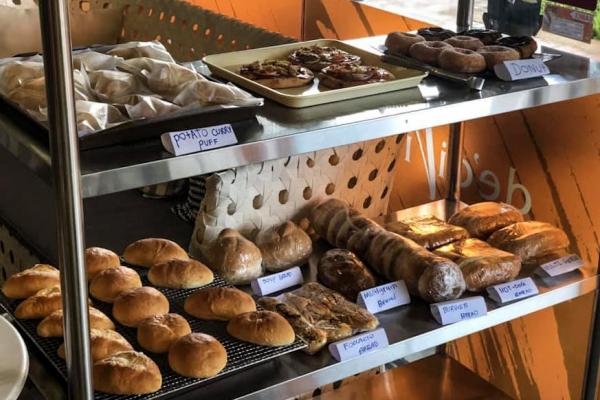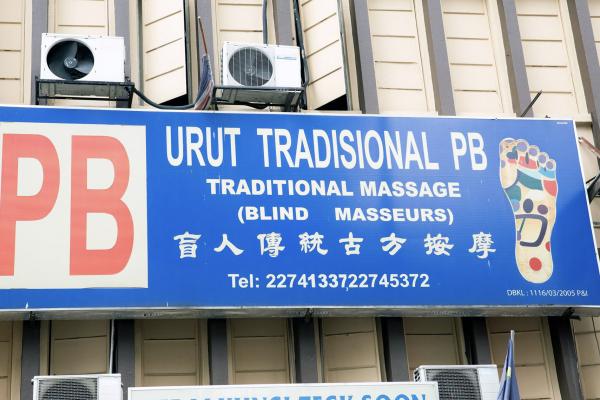Adventure sports and a chance to spot the world’s biggest flower are Ulu Geroh’s calling cards. But the indigenous Semai people who fend off threats to their forest are the real stars. Stay with them to experience the magic of the forest, and support their efforts to preserve their traditions and the environment.
MEET INSAN
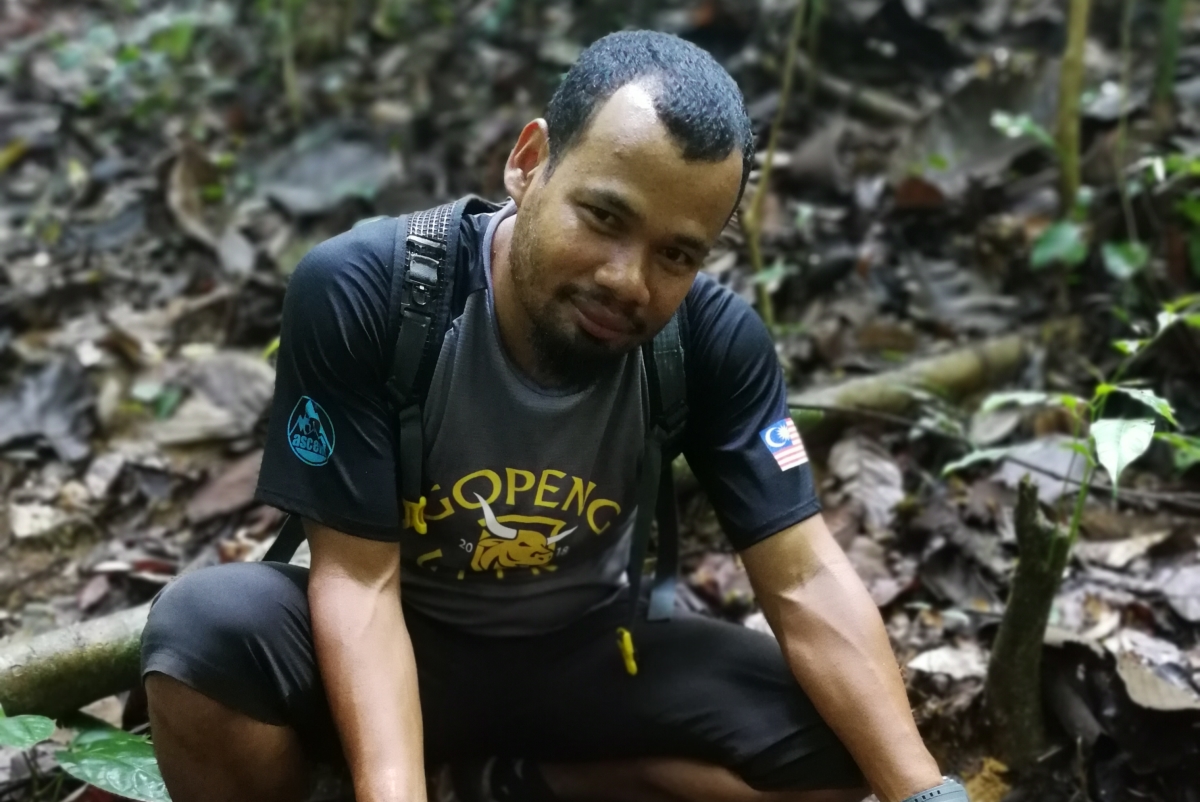
For Bah Insan, protecting the forest is a way of life.
His people, the Semai, inhabited the forest for centuries as hunter-gatherers and are legendary for their affinity with nature: children as young as six are taught about the importance of the trees and can interpret animal behaviours to tell the presence of a predator.
“Our diet consists of fish that we catch from the river and ferns from the forest. We rely on rotan (rattan) and bamboo to build our houses,” he says. “Our very livelihood depends on the forest.”
Insan takes none of this for granted. That’s why he works as a guide for visitors to Ulu Geroh, his village in the northwestern state of Perak. “By creating greater awareness of the biodiversity of our forest, we can have a stronger voice to oppose activities that are harmful to the forest,” he explains.
Insan should know – just a few years ago, he joined forces with the locals to petition against illegal logging, and won.
BLOOM TIMES
Thousands of tourists have made their way to the Semai settlement of Ulu Geroh for one reason — to see the elusive Rafflesia, the world’s biggest flower.
Notoriously ephemeral, the Rafflesia grows only in the rainforests of Malaysia, Indonesia and the Philippines, and take nine months to grow before opening into a striking bloom that lasts only a few days. Sixty per cent of buds die before maturing.
While there are other locations in Malaysia to catch the fabled flower, your odds are best in Ulu Geroh, where researchers say the concentration of the flower is highest.
And while most Rafflesia sites are located hours or even days away from civilisation, the nearest Rafflesia site is a mere 30 minutes’ walk away from Kampung Batu, one of the five villages that make up Ulu Geroh.
Eco-tourism found its way to Ulu Geroh in the early 2000s when conservation group Malaysia Nature Society began working with the Semai to translate local knowledge into opportunities. For decades, the Semai had lived off the grid, marginalised by a lack of infrastructure.
Realising the potential of eco-tourism to create sustainable livelihoods, they formed Sahabat Eko-Pelancongan Memuliharaan Alam Indah (SEMAI), or Friends of Ecotourism and Conservation of Beautiful Nature, to oversee the efforts.
Proximity to the Rafflesia is not all Ulu Geroh has to offer. Over the years, the Semai have expanded offerings from Rafflesia day trips to include more immersive homestays for visitors to experience a centuries-old lifestyle deeply intertwined with nature.
COME FOR THE RAFFLESIA, STAY FOR THE LIFESTYLE
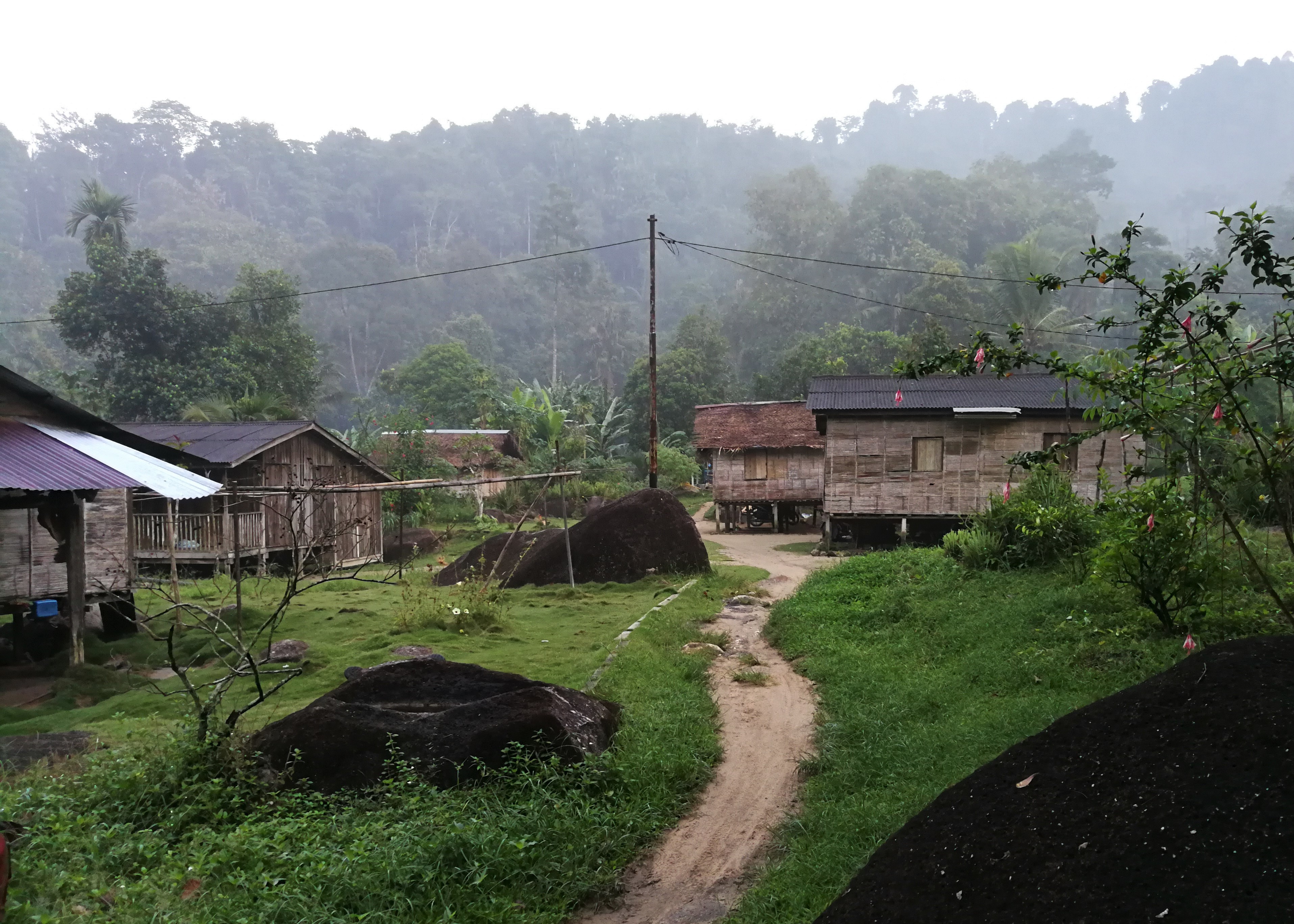
Kampung Batu is spread out over undulating emerald-green grassland thick with tropical fruit trees, herbal plants and flowering bushes, and giant boulders.
Amid this picturesque landscape stand the traditional Semai dwellings. Their simple structure belies their architectural ingenuity: assembled from bertam palm leaves and bamboo stems, these natural eco-lodges are sturdy and waterproof, able to shield against even heavy rain. Inside, bamboo stems form space-spacing shelves and compartments that would give Ikea a run for its money.
Through sponsorship from a CSR programme, five bamboo chalets were built for travellers next to the hillside, where all manner of fruit trees lie at your doorstep (I spotted duku langsat, mango, durian, coconut) and the temperature is deliciously cool at night.
The caveat? There is no electricity (you can charge your phone in your host’s home) and you answer the call of nature in an outhouse with a squat toilet.
Can’t live without your urban comforts? You can always opt for a host of eco-villas downstream that employ locals on their properties and hire locals as day trip guides. “When a visitor opts for these activities, my people also get to work and earn,” says Insan.
The Semai may live in permanent dwellings now, but aside from that, their lives have changed little from their peripatetic ancestors.
The traditional lifestyle demonstration during the tour may feel like its most touristy segment, but stands as living proof that the old ways are no less creative. I could barely keep up with the women’s lightning-fast fingers as they showed me the art of basket weaving using coconut leaves. Visitors can also learn how to set traps that snare animals in a way that kills them as painlessly as possible.
GREEN HAVEN
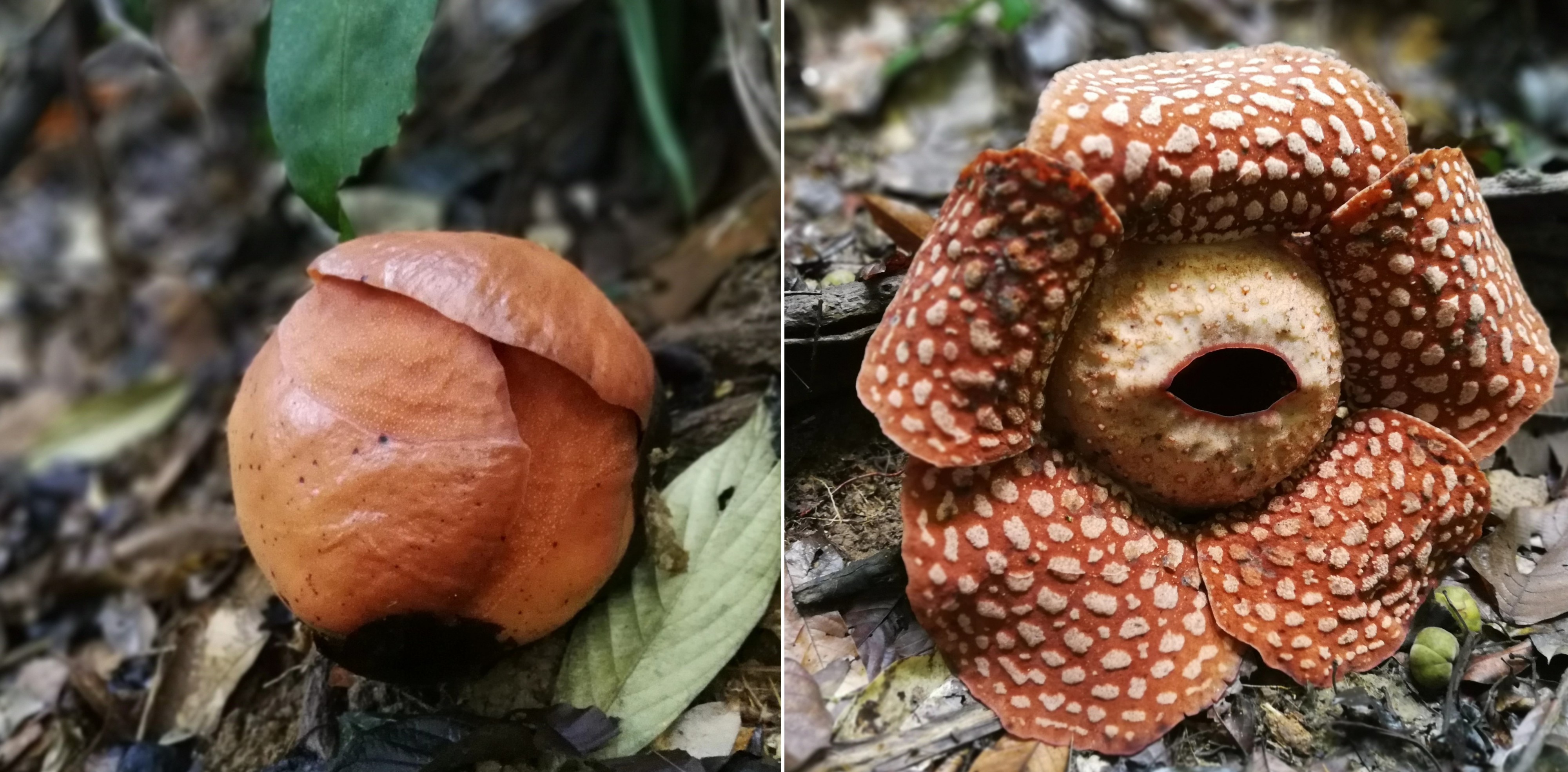
Surrounded by rivers and forests, Ulu Geroh is a haven for nature lovers, as my group would discover on our Rafflesia hike.
The rigorous trek took us up the Leech Trail (which lived up to its name, in case you’re wondering), where we lucked out: we saw three Rafflesia blooms and an unopened bud. Most people only succeed in seeing the Rafflesia in full bloom after multiple attempts.
Yes, totally worth it, even with the leeches. We celebrated with a proper feast back at the village: at least three kinds of river fish, several types of wild ferns and an array of spicy sambal paste laid out neatly in bowls on the floor.
In addition to its most famous flower, the forest teems with exotic wildlife, notably the Rajah Brooke’s Birdwing butterfly, a metallic-green-and-black beauty that stands out in an environment where the default mode is incognito.
Don’t miss the night walk that takes place after dinner. The leisurely one-hour stroll will open your eyes to a whole new world of nocturnal fauna and if you are lucky, glowing mushrooms.
My most memorable moment happened late afternoon on my first day.
Waiting for our blowpipe demonstration after lunch, I sat on the steps of my chalet observing a group of children playing nearby. They danced and sang traditional Semai songs, while darting occasional glances at us, the newcomers.
Suddenly, one of the older girls broke away from the group and plucked something from a nearby plant. Minutes later, she ran up to me with a big smile and placed something in my hand. It was a delicate necklace, strung out of the leaves of a tapioca plant — my welcome gift from the children of Ulu Geroh.
I knew then that a piece of my heart was lost forever.
